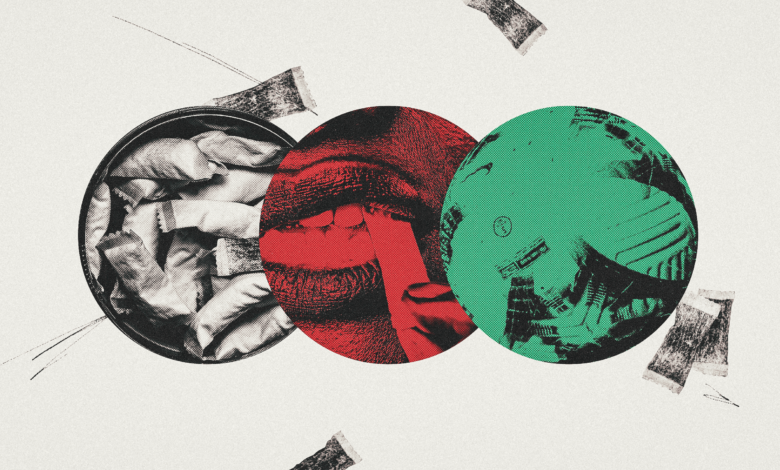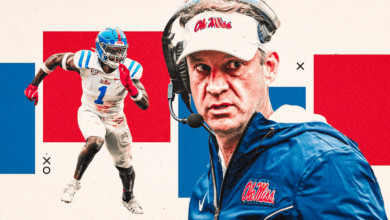Special report: Why is snus rife in football?

One afternoon two seasons ago, an EFL manager was tidying a locker during the players’ warm-up when, underneath a pile of socks and shorts, he found a tin of something he did not recognise.
The kit man revealed it was a substance known as ‘snus’ and conceded the support staff had not shared their knowledge of it. It prompted the manager to do a sweep of the lockers and he was astonished to find around 75 per cent of players had snus carefully buried away. At his next club, he put the number at around 50 per cent.
After researching snus and finding links to gum disease and various cancers, he tried to educate the players, but he found himself powerless. They were convinced it gave them an edge on the pitch.
Snus is a smokeless tobacco product placed between the lip and gum that originated in Scandinavia and gradually became a mass-market product after Sweden implemented a ban on smoking indoors in 2005. It is socially ingrained in everyday life there but also within football culture, to the extent physios have been known to run on with a replacement pouch for a player, while board members would excuse themselves from meetings to resupply.
Many players from the region have introduced it to team-mates in the UK but tobacco snus is banned from sale in the UK. In its place, all-white nicotine pouches have swamped the dressing rooms of professional football clubs, with brands such as Siberia and Killa selling multiple different flavours on their branded tins.
“A doctor I know had just joined one of the top Premier League clubs and saw there was a huge snus problem,” Dr Chris James, a clinical psychologist working in elite sport, tells The Athletic.
“The manager was very concerned about the use of it as there were pouches scattered everywhere but the club didn’t really understand why they were using it or the impact it was having.
“He wanted me to come in and provide some education to the players, but football is an incredibly frustrating world to work in because clubs often have these fleeting moments of, ‘Oh, this is a problem, we need to sort it’, but then they run into trouble, the manager comes under pressure and it all gets binned. I never even got in the door.”
Through his work in elite sport, Dr James has worked with numerous Premier League clubs and players, but after launching Sleep Athletic in 2020 he began to notice a pattern in which conversations with footballers around sleep were commonly diverting to snus.

GO DEEPER
Football’s addiction to sleeping pills – ‘a disease spreading quietly across the game’
“Another doctor from a big club contacted me about one player who was having chronic sleep problems,” he says.
“He was only getting five hours of sleep, when most elite athletes should be getting at least nine. I did an assessment and it transpired he was using an unbelievable amount of snus, around four pods per day.
“It was almost constant and, since it is a stimulant, it was likely preventing his body’s natural process of winding down and sleeping. This was the real issue but he was super addicted and didn’t want to change as he believed it helped him relax and de-stress.
“He was still performing as a first-team player, but the staff were frustrated as they thought this was someone who could be an international player.”
In another encounter, a leading player in the women’s game explained how it had become rife and was used as an emotional crutch to alleviate anxiety and pressure, but the club made it clear they did not want that response to be made public.
It is partly why snus has been hiding in plain sight within football for years.
First cemented in the public consciousness by Leicester City striker Jamie Vardy in 2016, its visibility has grown, with Arsenal defender Ben White seen on holiday last month carrying multiple tins in his hand.
Beyond these brief snapshots and anecdotal evidence from The Athletic’s tackling of the subject last year, the scale of usage was largely guesswork.
But in May, Loughborough University published a seminal research paper — in conjunction with the Professional Footballers’ Association (PFA) — showing that one in five players are using snus in English professional football and two in five have tried it at least once.
The results were produced from an anonymous survey of 628 male players and 51 female players, with 16 medical and performance personnel providing their insight into its presence in football.
Daniel Read, lead researcher of the study, believes the high response rate was due to their answers being submitted via a QR code from the PFA and not through their clubs, where there is a fear of being caught in some places.
Snus is mostly bought in shops or online and there is nothing legally stopping players from using it, nor are there any directives from UK Anti-Doping (UKAD).
A majority of the players use it before and after training, after games, on days off and nights out, but over 36 per cent report cravings, and 50 per cent of the men’s game indicated they want to quit in the next year. More than half of those in the men’s game and almost three-quarters in the women’s game reported elements of nicotine dependence.
More than half of players first used it because a team-mate did, showing how social assimilation plays a part, but more than a third say they use it without thinking.
Boredom (47 per cent and 55 per cent) and stress relief (43 per cent and 55 per cent) were the main two reasons for using in both the men’s and women’s games, and by far the biggest performance benefit they report is relaxation (55 per cent).

This poster is commonly displayed at professional clubs to educate players about the implications of using snus
A key reason snus has been allowed to infiltrate so many dressing rooms is that the impact on health and performance is unknown.
However, a head of performance at an EFL club tells The Athletic they have uncovered one effect of snus, having conducted in-house research via continued glucose monitoring with a group of first-team players.
The players agreed to send pictures of everything that passed their lips for six weeks, and that included snus for the 30 per cent of participants who were regular users.
Club staff could see in real-time, via a mobile app, how food, exercise, sleep and snus affected their blood sugar levels. Although yet to be made public, they discovered that there was an average increase of seven per cent in their blood glucose levels within five to 10 minutes of applying snus to the gum.
They realised the impact of their precisely calculated plans for carbohydrate loading before matches and refuelling afterwards were being unwittingly diluted. Increased blood sugar blocks the body’s natural insulin response and can have knock-on effects on metabolism and cardiovascular function. It can lead to quicker fatigue during exercise.
In the Loughborough-PFA study, a performance staff member reported that a player suffered a significant tachycardia (when your heart suddenly beats much faster than normal) that had no explanation other than the fact he had been using snus. Another saw a correlation between injury-prone players and regular users, while one club registered every player at a local dentist as a precaution.
One academy director posted a link to the research paper in the team group chat to highlight the subject as it is filtering down into under-21 and under-18 groups.
A large number of academy player-care staff are involved in a national group chat designed to ensure they are aware of additional needs young players may need support with. One member of the group shared that snus had started making its way down into their club’s pre-professional age groups, while another performance coach recalls a scholar selling it outside of football as a second income.
The Athletic has spoken to more than a dozen medical and performance coaches, player-care staff members, psychiatrists, coaches and agents to understand why so many footballers are so reliant on it.
Is there a deeper issue below the surface?
“It’s not a snus epidemic, it’s an anxiety epidemic,” says Sue Parris, who was head of education, welfare and player services at Brighton & Hove Albion for eight years.
Parris is an emotional-welfare specialist and has spent the past four years working one-to-one with players from age 17 upwards through her business The Changing Room, a space for footballers to discuss the emotional highs and lows of the industry, which now includes a podcast.
“It is very evident from my work and research that snus is used because it suppresses the pain of an emotion they don’t want to feel, or to feel that they belong,” she says.
“So what is missing from what these young men experience? What is it they’re not getting from what the outside world sees as the perfect dream? Everyone wants what they’ve got — but when you know what it is they’re experiencing, you wouldn’t want that for your child.
“Most tell me snus takes the edge off their anxiety and some say it makes them feel better — but better than what? What are you expecting to feel like?
“These young men need support in understanding their emotions, being self-aware and able to self-regulate. Then they won’t need to look for substances to regulate the things they find challenging.
“A lot of it is hidden or they won’t admit it as clubs tend to be environments of toxic masculinity. I started my business as it is very difficult to create a psychologically safe space within the football culture.
“It’s an environment where you’re constantly under scrutiny. You know what the expectations are of you but you know you can never meet them consistently. So you carry this idea that you’re not enough: you carry the feelings of fear, loneliness, imposter syndrome, not wanting to let anyone down.
“The use of snus is just another coping mechanism. It’s a complete byproduct of a much bigger issue.”

GO DEEPER
Why football fears tramadol: ‘It’s an evil drug – it nearly killed me’
Agents are aware it is widely used, including by their own clients. They try to educate the players but point to the narrow life these young men can lead to give context over why they are gravitating towards snus, which many see as the least bad of vices available.
Academy players are under pressure to make it to professional level and, once in the first team, the schedule is unrelenting, with intense training, travelling, high-pressure matches, social-media reaction and few avenues to switch off.
One agent makes the observation that footballers become habitual creatures from a young age as every week is cyclical and the timeline of every day is micro-managed.
He finds that, after football, they almost need to be rehabilitated into society because they do not possess a high level of intuition and snus is one of the few things they have autonomy over every day.
“I also wonder whether it is because they are obsessive people,” says one head of performance with experience working across Championship and Premier League clubs.

Leicester City striker Jamie Vardy is one of the high-profile examples of footballers who have used snus (Copa/Getty Images)
“Boxers take espresso shots as it gives them energy and doesn’t have any calories when they’re making weight. Snus is something they can snack on and crave and nicotine represses appetite.
“Is it that it becomes one of those behavioural things that just becomes part of your routine, like chewing gum, and they don’t even know why they are taking it?”
Another performance coach was tasked with extracting “marginal gains” from a Premier League player, only to realise during one session seven years ago that his client was hooked on snus when a box was delivered to his house from Sweden with around 50 snus tubs in it.
“It is like a fidget spinner but, at a certain age, you need a bit more,” he says.
“If he does something, he does it to the max. It is why he has been so successful at football but he goes to extremes — so if he breaks, he goes on benders.
“So many players I work with are like that. My son has ADHD (attention deficit hyperactivity disorder) so I do a lot of therapy around it and can tell certain characteristics.”

GO DEEPER
How English football got hooked on snus: ‘Players don’t understand the threat of it’
Dr Asad Raffi, a consultant psychiatrist at Sanctum Healthcare, who counts ADHD and addiction as two of his areas of special interest, believes these are examples of an unspoken link between ADHD and footballers’ proclivity for addictive behaviour.
Impulsivity and mental hyperactivity are common symptoms of ADHD. The area of the brain responsible for coordinating functions such as impulse control, organisation and emotional regulation is known to have a dopamine neurotransmitter imbalance, which also means the brain’s reward deficiency pathway is activated.
People with ADHD are more liable to engage in dopamine-chasing behaviour or use substances that rebalance dopamine in the brain — leading to cravings for stimulation, such as a nicotine pouch.
“We’re linking it all together and providing a narrative to snus use but also other addictive behaviours,” says Raffi.
“Typically, ADHD is seen as inattention but the true representation is that they have attentional difficulties and can actually hyper-focus on the things they care about — until the novelty wears off. It is why some players will be late for training and can appear disengaged as they’re not motivated by it but can turn it on in a match when it counts.
“It gives some players a high ability but I liken it to having a supercar brain with bicycle brakes. They can be really creative, think ahead of play and work well under pressure but they’ll overthink, ruminate, and won’t enjoy the moment. They need the right balance of stress to operate.”
Managing sleep, stress, diet and nutrition is essential. Medication can be taken to correct the imbalance but it requires special authorisation from UKAD.
While cannabis and cocaine are banned substances, alternative means of dopamine hits include impulse buying, gaming, phone use, sexual indiscretions, driving-related offences, problematic alcohol use, gambling, nitrous oxide balloons and snus.
Raffi says he has diagnosed more than 60 elite footballers with ADHD and suspects it is an underlying factor in the reason many have become drawn to snus. Usage alone is not a red flag for ADHD, but combined with other features, it is something that has to be considered.
“Players do not initially come to me for snus addiction,” he says.
“It is only when they arrive at greater problems like facing career ruin or a criminal offence, meaning they are facing consequences for their behaviours. That’ll be the headline and when you start to unravel it, snus is part of the picture in the context of ADHD.
“I have offered clubs our services to come in and screen academy kids on a pro bono basis. If it shows they need further intervention we’ll then help or signpost. We’re not looking at this as a commercial thing, it’s about education and providing access to interventions and an explanation of why they are not achieving their true potential.
“The problem is getting access to the players and addressing the stigma of the ADHD label. I told someone close to a rising England star years back that they needed to be diagnosed as I had heard about his behaviour but most clubs don’t understand it and don’t see it as their issue.”
An academy director describes how they did a lot of work on it after the use of snus in the first-team building — including by coaching staff — led to it becoming widespread in the reserve team. The club added it to the code of conduct, held educational meetings and one-on-ones with the club doctor and a dental expert, as well as devising programmes to wean the teenage players off the substance — though it was felt some simply started to hide the use.
At a different club, a coach was shocked during the Covid-19 pandemic to find discarded nicotine pouches scattered all across the floor, despite the emphasis on good hygiene and social distancing.
It prompted the academy director to ban it from the premises, which led to a decrease in its visibility but an increase in the number of players walking around with their mouths firmly closed.
Some in the game highlight how the contradictory attitude towards the casual use of sleeping pills and anti-inflammatory drugs undermines the health warnings about snus.
“We can have players rattling as they go onto the pitch because they’re full of naproxen, co-codamol, diclofenac and ibuprofen,” says a coach.
“We are seemingly OK with that, even though we know the consequences later down the line. But we then say they can’t take snus even though they are claiming it helps them perform mentally.”
Some players eventually come off the substance. One coach recalls witnessing senior players in their thirties celebrate two years of being snus-free, reminded of the landmark by the rehab app on their phone.
The one common sentiment from those within the game is about the need to reframe the conversation around snus away from simply being about how many players are users. Instead, there is a desire to understand the forces leading them towards addictive substances.
“If you are going to drive it underground, players will still do it,” says a Championship club’s head of performance.
“Players are human. We can say snus will give you gum disease but people still excessively drink alcohol and people still smoke when they’ll get damaged livers and lungs, so it’s understanding why people do it. Is it about dealing with playing pressures and performance anxieties?
“We’re trying to bring players into an environment where they know the support team is there to support, not criticise or lambast or challenge or manipulate them to do something they don’t want to do.
“If we or the players think they are not performing on game day, we need to try to help them understand why that is. If snus is a factor, then we need to understand their motivation for why they want or feel they need to use it. Then we can devise a collective strategy that could even help players take it to relax but at times where it will not hinder their performance.”
So, where does football go next with snus?
James Bunce, former director of performance at the Premier League, Monaco and U.S. Soccer, believes there are holistic ways football can help reduce the need for substances.
“At U.S. Soccer, we signed a partnership with Headspace, the world’s biggest mindfulness and meditation app,” he says. “Before the Women’s World Cup, the players all had individualised programmes to help them deal with different moments of the tournament: pre- and post-game, sleep. The app would talk them through something for that moment — whether it was to recharge, reflect or stimulate before a game.
“At Monaco, we had two full-time psychologists who worked with the players to develop their psychological tools to support them through various on-field and off-field challenges they would face.”
Dr Michael Bennett, the PFA’s director of player wellbeing, believes his organisation’s study can open up the debate.
“The study we conducted with Loughborough University showed many players are unaware of the risks associated with snus before they start using it,” he said. “It also showed that a lot of members use snus for reasons it doesn’t effectively address, such as help with sleep.
“We will use the research to develop targeted educational information for our academy players. That’s something we always look to do with the wellbeing issues that might present at senior level. These are likely to impact future professionals as they move forward in their careers. Snus is a good example of that.
“The study indicates many players using snus want to quit. That’s a really valuable insight that means we can work to make sure there are clear pathways for those seeking help so they can access support and resources.”
(Top photos: Getty Images, iStock; design: Dan Goldfarb)




